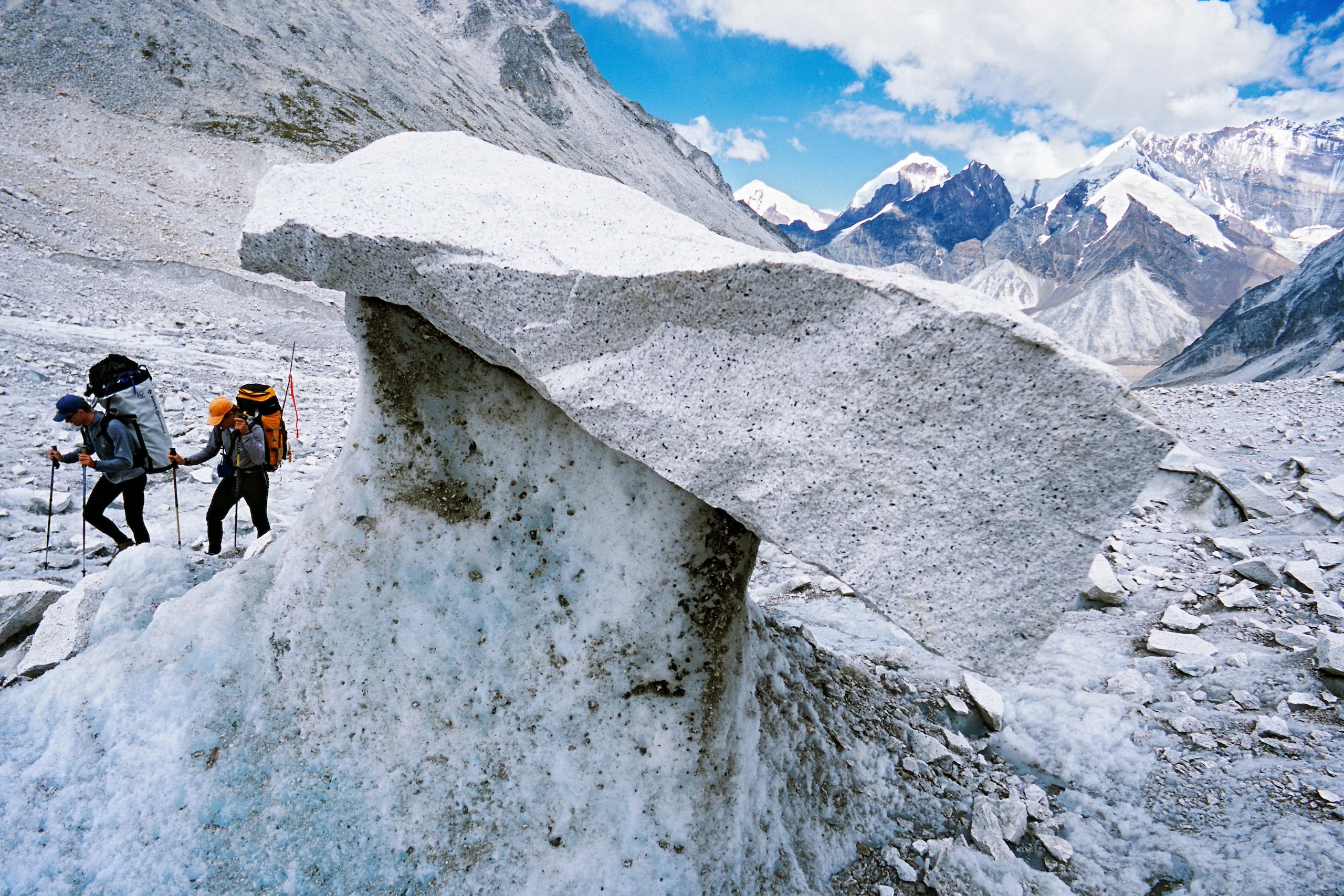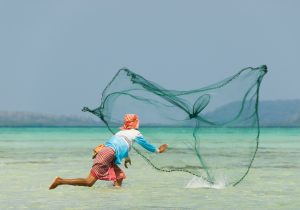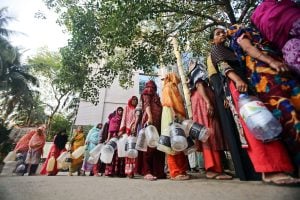This year’s World Environment Day is being observed just as a third of South Asia’s national elections come to a close in Pakistan, Bangladesh and India spread over the last six months.
In the heated lead up and campaign rhetoric, the shared history, culture and ecology of South Asia was ignored. The lack of collaboration between the countries of the region must change, if for no other reason than the simple fact that if we do not work together, then the future of all the people living in this region will be increasingly imperiled in the face of climate-induced disasters.
This untapped space for collaboration has today assumed greater urgency due to climate change; a phenomenon that transcends borders; one that needs no passports to reinforce a negative feedback loop with a domino effect that accelerates impacts.
The arc of vulnerability in South Asia starts from the mountains and trickles down to the ocean, with everything in between affected. The region is also marked by sharp topographical variations, starkly different climatic zones and a diverse range of ecosystems, that together make up the complex geophysical entity of the sub-continent.
The Third Pole holds the most reserves of frozen waters after the North and South Poles. It spans across 4.2 million square kilometers across nine countries and encompasses the Tibetan Plateau, the Himalayas, Karakoram, Hindu Kush, Pamirs and Tien Shan mountains. Anything that happens here will not remain confined to this area. The cascading effect will disrupt the local and global climate regime. On a human timescale, the tipping point in the cryosphere – the frozen water part of the Earth’s system – may happen slowly. But once it crosses a certain threshold, the effects become unstoppable. History has shown that drastic changes, spread over time, can result in mass extinctions. Today, some fear that the planet is headed towards its sixth extinction.
How well-prepared is South Asia to cope with recurring and intensifying calamities? Is operating under the business as usual scenario still a viable option? These are some of the questions that need to be addressed before any dialogue can be initiated to explore space for a conversation on collaboration. Prior to now, it was possible to maintain the status quo because regional countries, albeit with growing difficulty, could still absorb shocks from disruptions in ecological services and climate-induced disasters.
However, the increasing risk gap between current global emissions and mitigation efforts required for the planet to stay within the safe threshold of 1.5C is slipping out of reach and throwing the region in a flux. Destabilisation in a region with two billion people could have devastating consequences for the world. The capacities of individual countries to cope may not be adequate.
The earth’s history of nonlinear climate responses increases the uncertainty quotient, making it necessary to shift from business as usual to new pathways that minimise risks.
New research suggests that global warming has accelerated the rate of melting in the high mountains of South Asia. This continued fiddling with the thermostat will ultimately lead to runaway ice collapse and irreversible sea-level rise.
Water, notwithstanding the geopolitical fault lines, therefore, provides a compelling case for collaboration. The snows and glaciers of the Himalaya, Karakoram and Hindukush mountains (HKH) serve as a source of life that sustain 10 river basins and support 1.9 billion people. The absence of an integrated approach leaves the region exposed and unprepared to face threats that are likely to be unleashed by slow, sudden and extreme climate events in the future.
Anything that happens here will not remain confined to this area. The cascading effect will disrupt the local and global climate regime.
ICIMOD’s recent report, Elevating River Basin Governance and Cooperation in the HKH Region, is a reminder of the challenges, as well as the actions, needed to strengthen basin-wide cooperation. It highlights the role of governance at the heart of formulating successful policies and ensuring its effective implementation. Some of the key issues in the report pertain to the need for developing a water governance framework, creating opportunities for female water professionals, documenting existing knowledge, encouraging adoption of common approaches and tools, and supporting people-centric approaches that are inclusive, broad-based and representative.
There can be no conversation about ice and snow without mountain ecosystems and communities. Living on the frontline of change, challenge and calamity, mountain communities share many similarities that cut across boundaries and pose common challenges. The high reliance on melt water for agriculture makes communities more vulnerable. High altitude and a short cropping season leave little room for absorbing variability in timing and quantity of melt water used for agriculture. Changes in hydrology patterns have myriad consequences on the lives of mountain communities. Malnutrition, outmigration, loss of cultivable land and increase in poverty are just some of the inherent risks associated with changes in water flow patterns.
Most of the population in the region relies on agriculture, livestock and fisheries for livelihood support. Any sudden climatic disruptions affect both upstream and downstream communities triggering a chain reaction that disturbs societal balance, pits vested interest groups against each other and leads to strife and conflict.
In South Asia, the average 25-year-old is part of a critical demographic that has the potential to transform society. Their fresh perspectives and ambitions could greatly benefit social progress. However, there’s also a risk of unrest if their concerns — such as unequal wealth distribution and limited access to resources and opportunities — are not addressed.”
With the window of opportunity closing fast, there is still time for South Asia to revisit its past, analyse the present and plan for a safer future.
The dynamics of climate change in South Asia are interconnected, but despite its socio-cultural similarities it remains the least integrated region in the world, exposing its people to rising risks.
Social norms play a major role in determining peoples’ response to adversity. With growing scarcity and a burgeoning population, it is important for South Asia to invest in a culture of empathy, understanding and respect that epitomises the cultural ethos of its shared history.
The upcoming climate conference in Azerbaijan, in November, offers South Asia an opportunity to unite in advocating the cryosphere’s inclusion in the global environmental assessment. This is a crucial step towards collaborating to protect our mountain snow. Civil society must step up their efforts to preserve the region’s ecological integrity. If the Third Pole collapses, it would spell disaster for the whole region.









